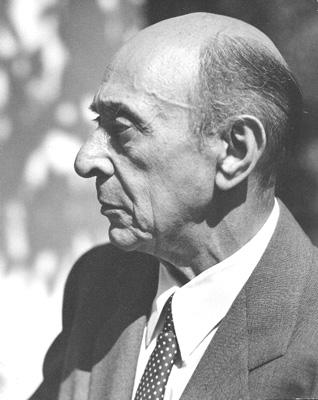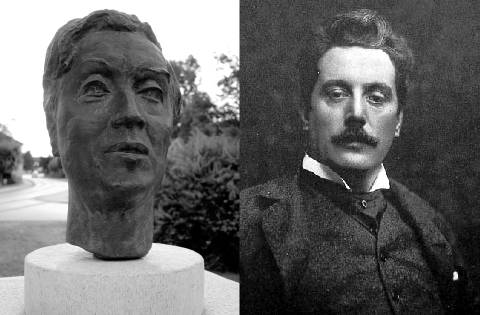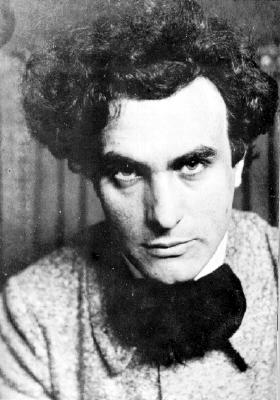|
LIMITLESS COMBINATORICS

ERIC PETTINE postulates
'No Shortage of Melodies Anytime Soon'
and offers some real hope for cynical
musicians who think they've heard it all before
In his 1997 book, How The Mind Works, Steven Pinker describes combinatorics, which highlight the seemingly endless cache of a person's thoughts and subsequent actions.
Pinker's posits that if you combine a few elements and a few rules, you can generate a virtually infinite number of ideas. For example, in manipulating sentence structures of twenty or less words with ten choices for each word of the sentence, the number of possible sentences extends exponentially into the realm of a hundred million trillion different sentences. Pinker then relates this concept to the musical sphere, claiming:
We are unlikely to have a melody shortage anytime soon because music is combinatorial: if each note of a melody can be selected from, say, eight notes on average, there are:
64 pairs of notes,
512 motifs of three notes,
4,096 phrases of four notes,
and so on, multiplying out to millions and trillions of musical pieces.
Appying similar calculations to harmony, it also appears that while perhaps not as infinite as melody, the harmonic structures which often define and shape melodies are also multitudinous. Author Duane Shinn, in his article, How Many Chords Are There Anyway? stated that there are a total of 48 possible triads involving major and minor thirds, the common building blocks of standard practice tonal harmony (e.g. twelve major, minor, diminished and augmented triads). Additionally, there are a total of 84 different standard practice chords comprising four notes (eg twelve each of diminished 7th chords, major 6th chords, minor 6th chords, dominant 7th chords, major 7th chords, minor 7th chords, and half-diminished chords). Then there are twelve each of larger collections and other alterations which frequently turn up in modern jazz harmony: 9th chords, flat 9th chords, 9th/major 7th chords, 9th/minor 7th chords, 11th chords, 13th chords, suspensions, flat 5th chords, flat 5th major 7th chords, and on and on. Plus, each of these chords can be inverted, combined into polychords and voiced in numerous ways.
While the data enumerated by Pinker and Shinn is very cogent, and Pinker's observations are revelatory about human mental and creative possibilities, hope for an infinite supply of tonal resources quickly turns to cynicism once you realize that none of this data mentions (nor could really mention) the quality or the kind of melodies and sentences that are possible. Nor can this data determine how many of these melodies/sentences would have real and personal meaning to someone, convey a universal emotion, or even make musical/literary sense -- all elements which are essential to both great melody and great sentence-making.
Marvin Minsky has pondered this same terrain in his article, Music, Mind and Meaning. In the section entitled 'The Syntactic Theories of Music' he states that:
We like certain tunes (melodies) because they have certain structural features and they resemble other tunes that we like (the songs, carols, rhymes, and hymns we liked in childhood.
Some authors have claimed that certain melodies are innately likeable or that their tones may represent the mother's voice or heartbeat. Although we can't draw firm conclusions about what makes a particular tune likeable, one thing is for certain: humans definitely prefer some melodies over others and they continue to like the same songs, carols, rhymes and hymns from generation to generation. Perhaps one of the reasons several generations have revered and found meaning in the melody of Paul McCartney's song Yesterday could be because its melodic structure seems to perfectly mirror its narrative. When the lyrics are positive ('Yesterday, all my troubles seemed so far away ...') the melody ascends in a joyfully step-wise motion. When the lyrics reflect the singer's current situation of relative hopelessness ('Now it looks as though they're here to stay'), the melody becomes melancholic and moves in a step-wise descending fashion. But even without the lyrics, this song is still as potent and melodically meaningful today as it ever was. It seems the true, yet intangible, power is in the tune itself.
Musicologist Patti Whaley, in the essay Reality and Meaning of Music presented at the New Zealand Sea of Faith Conference in 1998, emphasized music's powerful intangible quality when she stated:
We perceive music as music precisely because it does convey meaning, because we hear it as an intentional pattern rather than a random occurrence.
What is amazing is that the listeners immediately perceive and comprehend certain melodies without having to comprehend the harmony and theory that allowed those melodies to happen in the first place. The experience is one where the listener can attach his/her own set of life experiences (mostly subconsciously/unconsciously) and values which ultimately make the music personally meaningful. And it seems the rules by which we attach a meaning to a melody are not/cannot be defined scientifically or from any other non-musical source: the rules are defined by the music itself.
Pinker never really seems to give consideration to the fact that most of the civilized world does not listen exclusively to melodies. Melodies are usually accompanied by harmony and that harmony is usually determined by chord progressions that are further controlled by a tonal center or key comprising a singular piece of music. When one utilizes specific notes of the harmonies to create melodies, it necessarily restricts the tones any given melody can possess. Similarly, once an author begins constructing sentences that abound from a particular chosen topic or theme, those sentences must directly relate or pertain to that theme in order to be comprehensible. To flit from one unconnected thought to another would make a series of sentences seem senseless and ludicrous. Consequently, given the above restrictions, there may not be as many possible meaningful melodies or sentences of the quantity that Pinker had intimated.

Arnold Schoenberg. Photo © 1948 Florence Homolka
|
In the first half of the last century, Schoenberg and his followers unconventionally tried to spin off new melodies by eschewing the chordal syntax I've described above, and later by directly avoiding them through the application of twelve-tone technique. But their compositional practices never really caught on universally. Why was this? Maybe it was due to the fact that, as German composer Stefan Wolpe (who composed using Arnold Schoenberg's twelve-tone technique in the early 1930s) mused:
The music lacked a 'chroma' -- the constantly evolving and equidistributed twelve tones that leads to an overall homogeneous 'grayness' that cannot be broken.
Maybe this lack could be one of the reasons why the world at large still loves to listen to and sing along with a Puccini aria such as 'Nessun Dorma' from his final opera Turandot (which premièred in 1926), and yet can't hum a single leitmotif from Berg's first opera Wozzeck (which premièred a year before in 1925 and did not employ the 12 tone technique but is, in fact, atonal). Although Wozzeck is brilliantly written (as is Berg's second and final opera Lulu which did mostly employ the 12 tone technique), it seems to lack the essential ingredients found in great and lasting melody-making: universal emotion and real personal 'meaning' and a 'color'.

Alban Berg (bust at Schiefling, left) and Giacomo Puccini
|
Most people in the world seem to prefer music that combines melody with harmony that moves according to progressions with a tonal center. There are no famous songs that are keyless. And longer musical compositions without a key center remain unpopular with audiences to this day since they tend to lose direction, sense and meaning. This is analogous to randomly stringing unrelated sentences together minus a central theme.
Yet it seems that there is another musical element that could be more malleable than melody or harmony: timbre. By its very nature, timbre has always been arrived at through experimental or empirical methods. Timbres don't have to follow a set of theoretical rules and strictures in the ways that harmony and melody do. A composer does not have to rely on past practices in order to create new and exciting sounds.
In the late 1960s and throughout most of the 1970s when synthesizers were especially ubiquitous, Wendy Carlos and Tomita made great melodies (and harmonies) by J S Bach, Stravinsky, and Holst seem fresh and new. They effectively accomplished this through utilizing the many new timbres that were afforded to them via the Moog or Mini-Moog synthesizers. Popular synth-heavy music groups of that era, such as Emerson, Lake and Palmer also produced very novel renditions of Mussorgsky's Pictures at an Exhibition and Aaron Copland's 'Hoedown'. Even in their own compositions -- especially The Endless Enigma -- Parts 1 and 2, The Barbarian and The Three Fates -- the group created enduring music. Never before in popular music had the Hammond B-3 organ's sound and treatment (which was mostly popular in jazz settings in the mid to late 1960s) been so unusually manipulated and the Moog synthesizer was taken to places where it had never been and perhaps has never gone since. The combination of those keyboard sounds with altered bass guitar and an unusual assortment of percussion, created an unprecedented palette of timbres.

Edgard Varèse
|
Similarly, Frank Zappa explored new timbral vistas through the use of the Synclavier in the 1980s and 1990s in recordings such as Jazz From Hell (1986) and the posthumously released Civilization Phaze III (1994). In the 1960s, Zappa, spurred on by his admiration for Edgard Varèse (a composer who pioneered new timbral resources in his music for percussion as well as his early experiments with electronic sound), created his own ensembles. Though nominally defined as rock bands, these groups explored a much wider timbral array than the standard combination of electric guitars, bass, and drums. Later he composed works for full scale symphony orchestras which were characterized by a ompletely personal approach to timbre. In some works, he even combined the sound of a rock band and an orchestra.
Although Boulez, Stockhausen, Cage, et al, were Zappa's contemporaries, they usually wrote music in one particular genre, and none were truly successful at composing music combining many different musical genres and different timbres. Zappa's music was far more accessible as well (perhaps due to the comedic bent and rhythmic verve of the compositions), and as a result has been more universally accepted. (Compare the sales of his CDs to that of other modernistic composers.)
Even from the end of last century to the present day the inclusion of various digitized sound samples are found in many popular music pieces creating new timbres with great frequency. Manipulating different sampled sounds has created new and unique timbres. Author/engineer Mingfei Mike Gao has stated in his article Samplers, 'Sampling has opened the door to the creation of timbres inexpressible by normal instruments or voices'. For example, Grammy award winning hip-hop producer Kanye West made famous a style of sampling vocals from soul songs that are sped up, creating timbres unrepeatable by real vocalists. How future composers may combine melody and harmony with the existing timbres as well as the unknown/unforeseen timbres emanating from electronic digital (or analog) devices is relatively unknown.
In 2006, Satoshi Shiraishi stated in his thesis A Real-Time Timbre Tracking Model Based On Similarity, that 'with the introduction of the computer as a musical tool of an apparently limitless flexibility, composers have been relieved from the rigid boundaries of acoustically produced sounds and sent on a quest for timbre synthesis, representation and manipulation'. Although the computer naturally lends itself to performerless compositions/'performances', perhaps the most interesting incarnations have been the melding of live musicians with the computer. In fact, the legendary Pierre Boulez' Repons features the composer's Ensemble InterContemporain sounds processed through the computer and then the computer responding to those sounds by contriving its own original sonic metamorphoses.
An individual musician/composer/performer, professional or not, can discover his/her own musical timbres by combining (or not) their own acoustic instrument(s) and/or voice(s) with the utilization of a Digital Audio Workstation (DAW). Pro Tools, a popular DAW, allows the user to manipulate the audio data information by altering especially the timbre and various rhythms, tempi and keys to create novel soundscapes. The 'sonic collage' effects that are attainable with a DAW affords the composer/performer myriad avenues to express him/herself.
Given this reality there should be real hope for us cynical musicians who think we've heard it all. There seems to be no shortage of possibilities any time soon -- the combinatorics seem limitless.
Copyright © 3 June 2007 Eric Pettine, Rhode Island, USA
 'HOW THE MIND WORKS' BY STEVEN PINKER
DUANE SHINN'S 'HOW MANY CHORDS ARE THERE ANYWHERE?'
'MUSIC, MIND AND MEANING' BY MARVIN MINSKY
'REALITY AND MEANING IN MUSIC' BY PATTI WHALEY
MINGFEI MIKE GAO'S 'SAMPLERS'
STEFAN WOLPE
WENDY CARLOS
ISAO TOMITA
EMERSON, LAKE & PALMER
FRANK ZAPPA
SHIRAISHI'S 'A REAL-TIME TIMBRE TRACKING MODEL BASED ON SIMILARITY'
'HOW THE MIND WORKS' BY STEVEN PINKER
DUANE SHINN'S 'HOW MANY CHORDS ARE THERE ANYWHERE?'
'MUSIC, MIND AND MEANING' BY MARVIN MINSKY
'REALITY AND MEANING IN MUSIC' BY PATTI WHALEY
MINGFEI MIKE GAO'S 'SAMPLERS'
STEFAN WOLPE
WENDY CARLOS
ISAO TOMITA
EMERSON, LAKE & PALMER
FRANK ZAPPA
SHIRAISHI'S 'A REAL-TIME TIMBRE TRACKING MODEL BASED ON SIMILARITY'
|

